4. Visit an electric shop. Request an electrician to show you the various types of fuses and MCB and to explain how they work.
Answer:
Various Types of Fuses:
Fuses are broadly classified into DC and AC fuses. DC fuses are designed for direct current (DC) circuits and AC fuses are designed for alternating current (AC) circuits. Fuses take advantage of the heating effect of current to break the electric circuit and prevent danger.
Several specific types of fuses along with images and a short description of how they work are shown below:
Cartridge Fuse: In this common type of fuse, the fuse element is enclosed inside a glass case with metal caps at the ends which serve as contact points. When the current in the circuit exceeds the normal value the fuse element burns and breaks the circuit. The glass casing is for protection and enables us to see if the element inside is blown. Cartridge fuses are used in electrical appliances in both DC and AC circuits and come in various specifications depending on the requirements of the circuits they are used in such as low voltage and high voltage circuits. Different fuse holders are used to hold the cartridges in place.
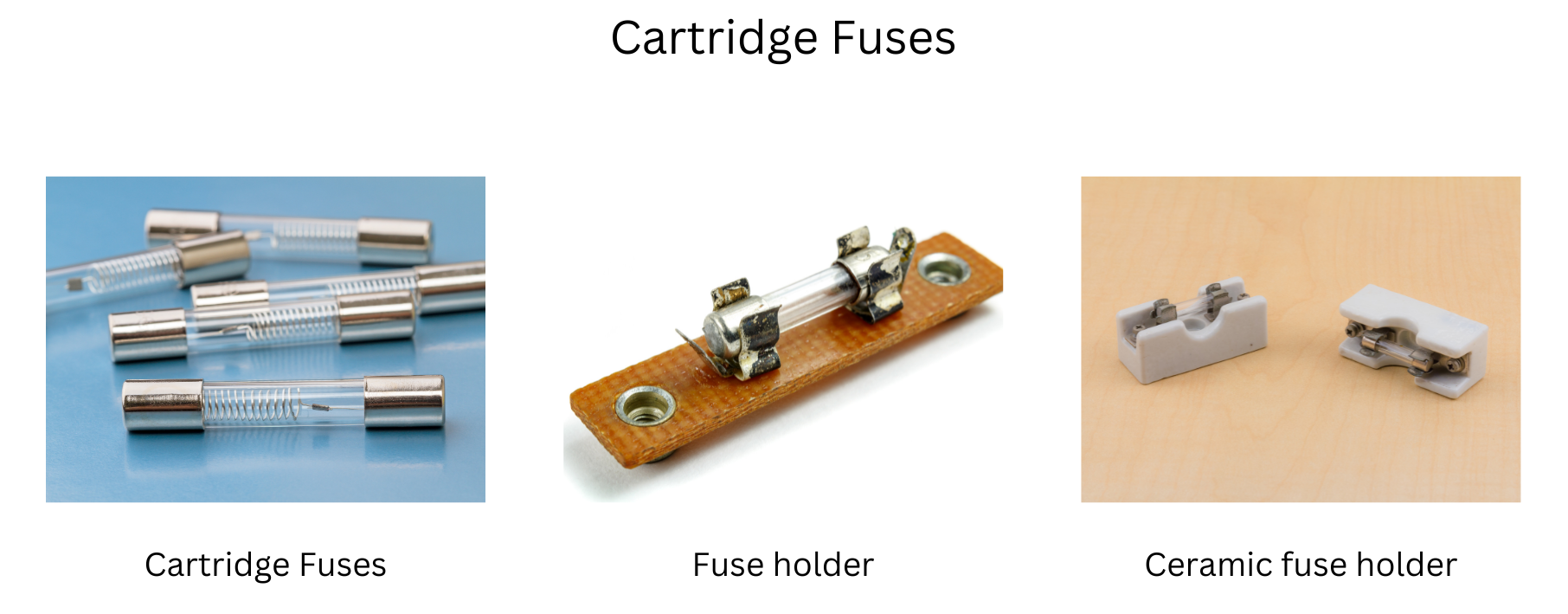
Automotive Fuse: Automotive fuses are DC fuses which are used to protect the electrical wirings in vehicles. They have a plastic body and two prongs that fit into slots. The metal ribbon which is the element is held inside the plastic body and heats up and melts when dangerously high currents flow through it, thereby breaking the circuit.
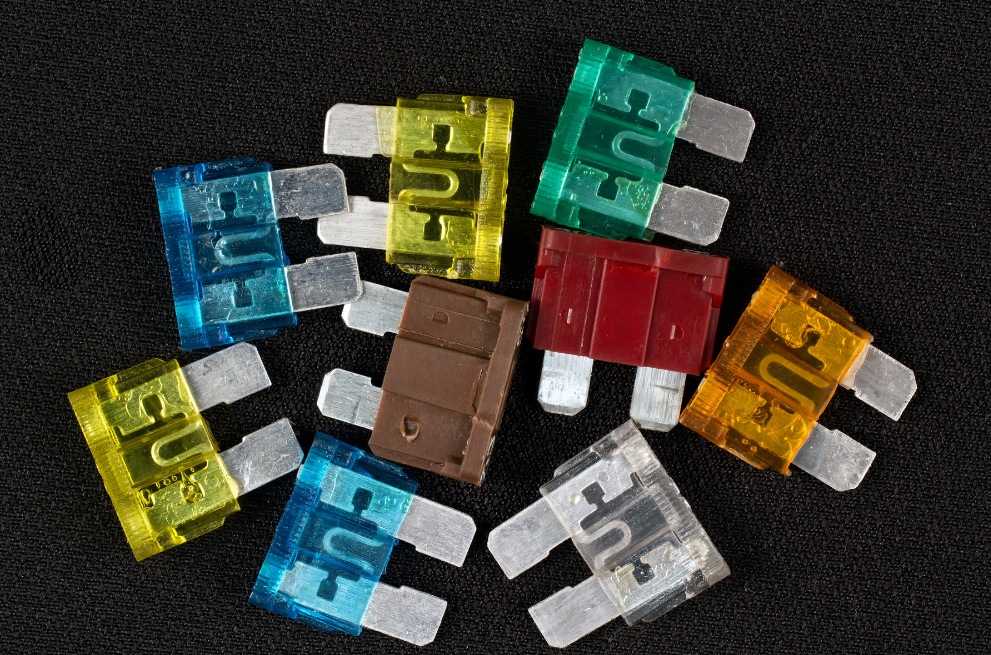
Expulsion Fuse: The fuse element is surrounded by chemicals like boric acid. When the fuse element burns due to excessively high current, boric acid evolves large amounts of gas due to the heat. The gases then quench the arc following which they are released from the ends of the fuse.
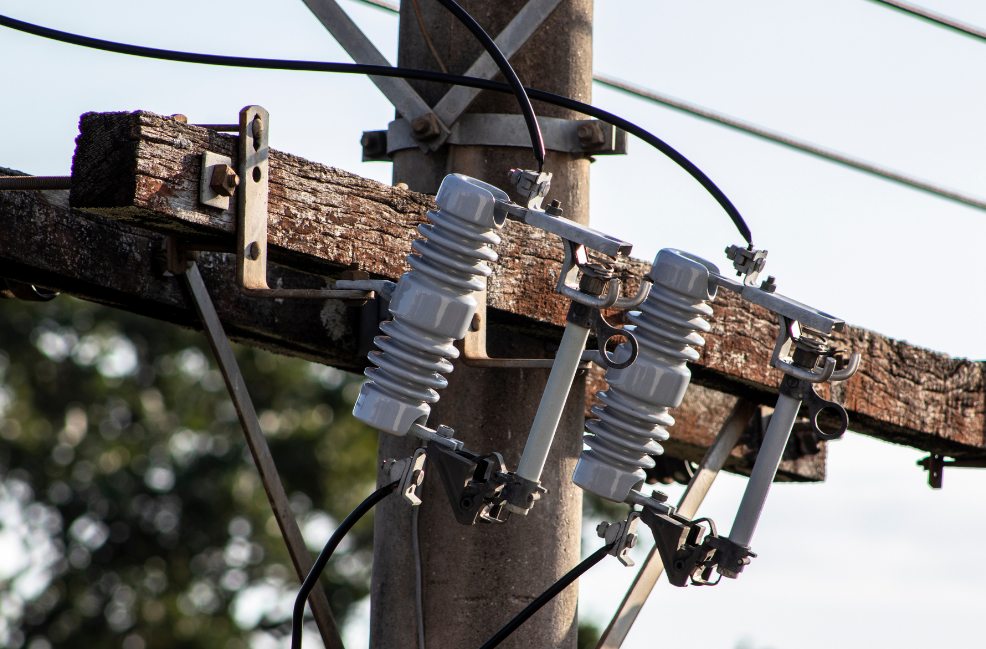
Dropout Fuse: This fuse consists of a spring-loaded lever arm which retracts and disconnects the circuit when a fault occurs, thereby preventing danger. Then it has to be manually reset.
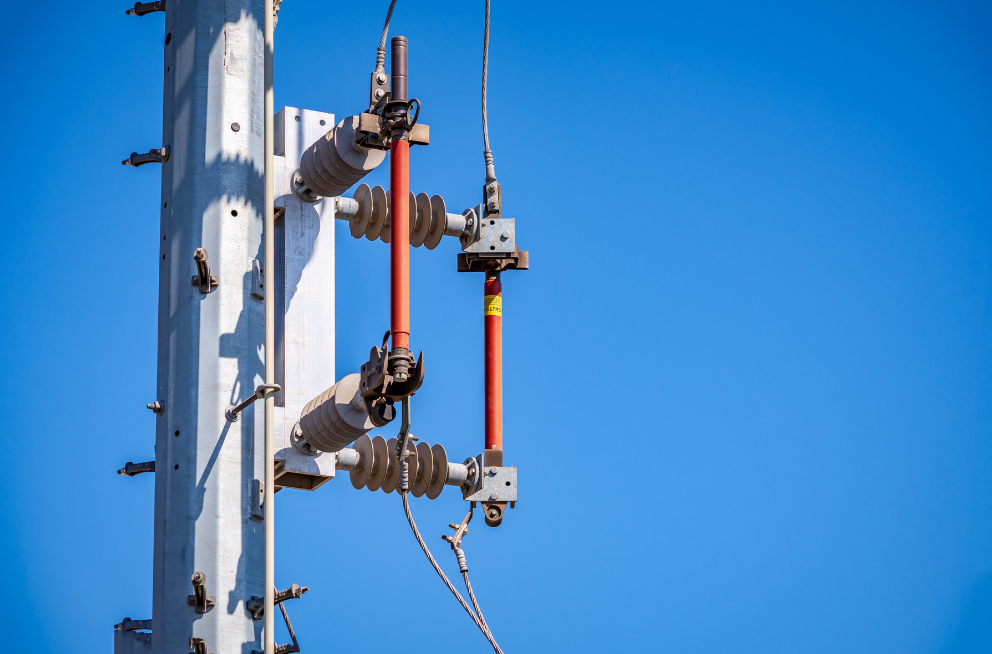
Rewireable Fuse (Kit Kat Fuse): A rewireable fuse or a kit kat fuse is an example of a low-voltage AC fuse. It consists of a base (shown on the left in the figure) and a fuse carrier which contains the element (shown on the right in the figure). The base contains two terminals on which the two terminals of the fuse carrier (between which the element is attached) sits after the carrier is inserted into the base, thereby completing the circuit.
When the current exceeds the permitted value the element burns and breaks the circuit, thus averting danger. The element then has to be manually replaced for the fuse to work again.
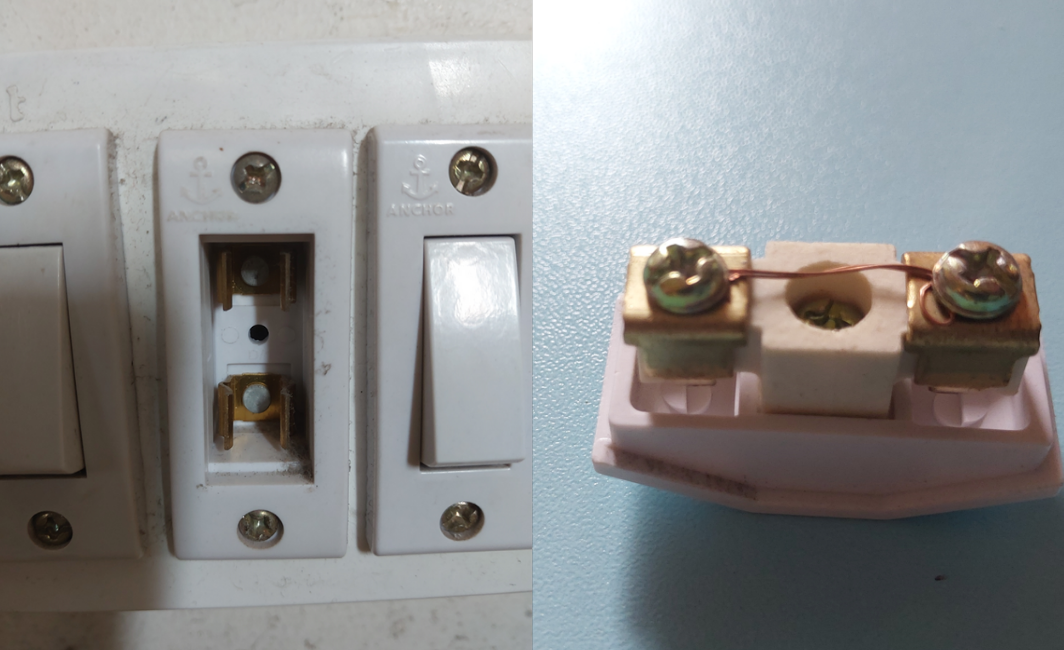
High Rupturing Capacity (HRC) Fuse: This fuse is used in both AC and DC applications. It consists of a heat resistant ceramic body containing the silver fuse element which is welded to the two metal end-caps at either end. The fuse element is surrounded by a powder which helps to quench the arc if dangeously high currents melt the silver element. The term ‘High Rupturing Capacity’ means that these fuses can handle extremely high values of fault currents without damage in addition to low ones.
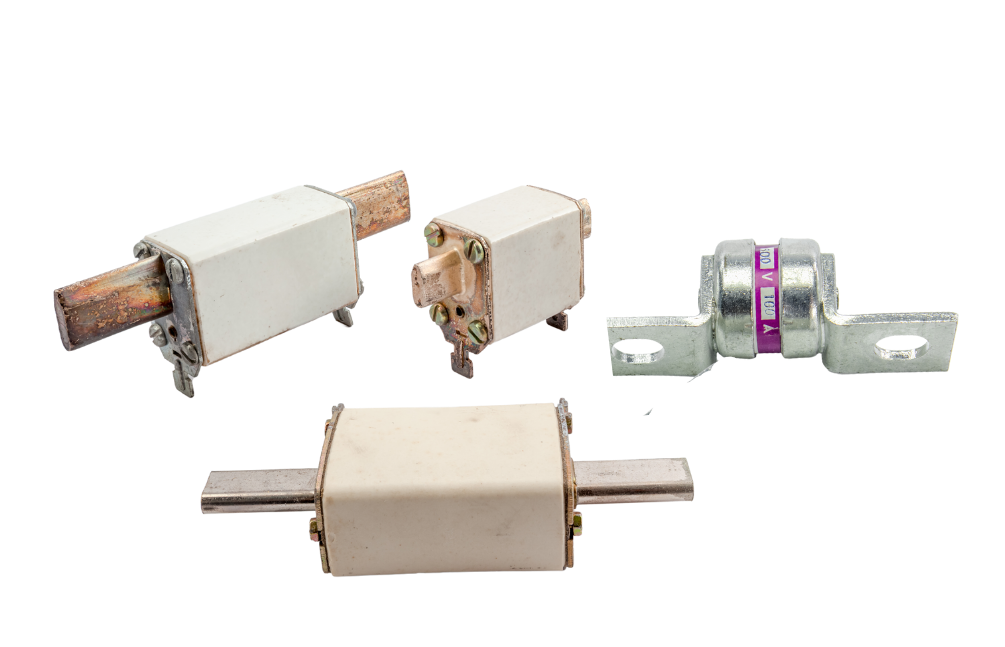
Surface Mount Fuse (SMD): The surface mount fuse is a type of electronic fuse mounted on top of a printed circuit board and is designed to protect low-power devices such as cameras and cell phones. Like with the other fuses it contains a fusible element which melts and breaks the circuit in case of a very high current.
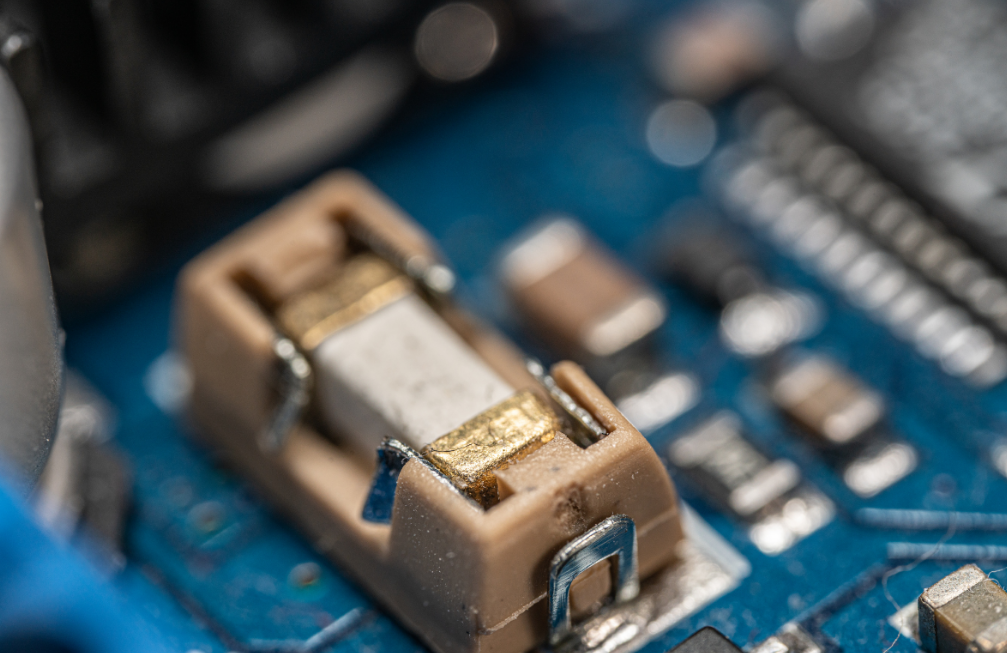
Various Types of MCBs:
A miniature circuit breaker automatically interrupts the circuit and protects the circuit and appliances from circuit overloading or faults. It measures the amount of electricity flowing through the circuit and if it senses that the current is too high, it automatically shuts off the electricity by means of a switch.
A very convenient aspect of a fuse is that it can be manually and quickly reset using the switch to restore power to the circuit after a fault has happened. Unlike a fuse, it does not have to be replaced.
A practical way of classifying the MCBs is based on the number of poles they support: Single Pole (SP) MCB, Double Pole (DP) MCB, Triple Pole (TP) MCB and Four Pole (4P) MCB. The images of these four types of MCBs are shown below:
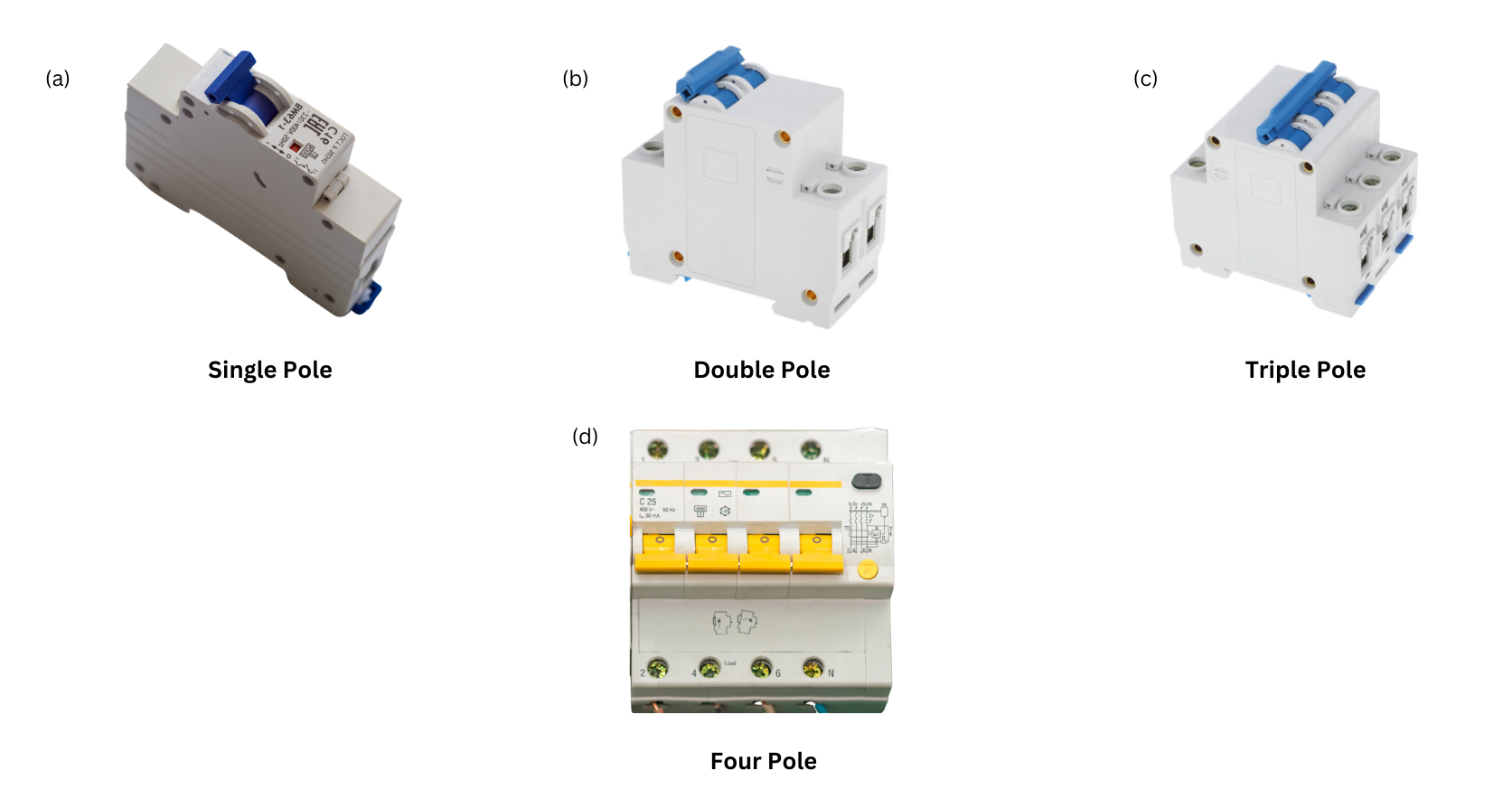
“Visit an electric shop. Request an electrician to show you the various types of fuses and MCB and to explain how they work.” -Solved.
Related Links:
Solution to Extended Learning Problem 1
Solution to Extended Learning Problem 2
Solution to Extended Learning Problem 3
Solution to Extended Learning Problem 4
Solution to Activity 10.1
Solution to Activity 10.2
Solution to Activity 10.3
Solution to Activity 10.4
Solution to Activity 10.5
Solution to Activity 10.6


